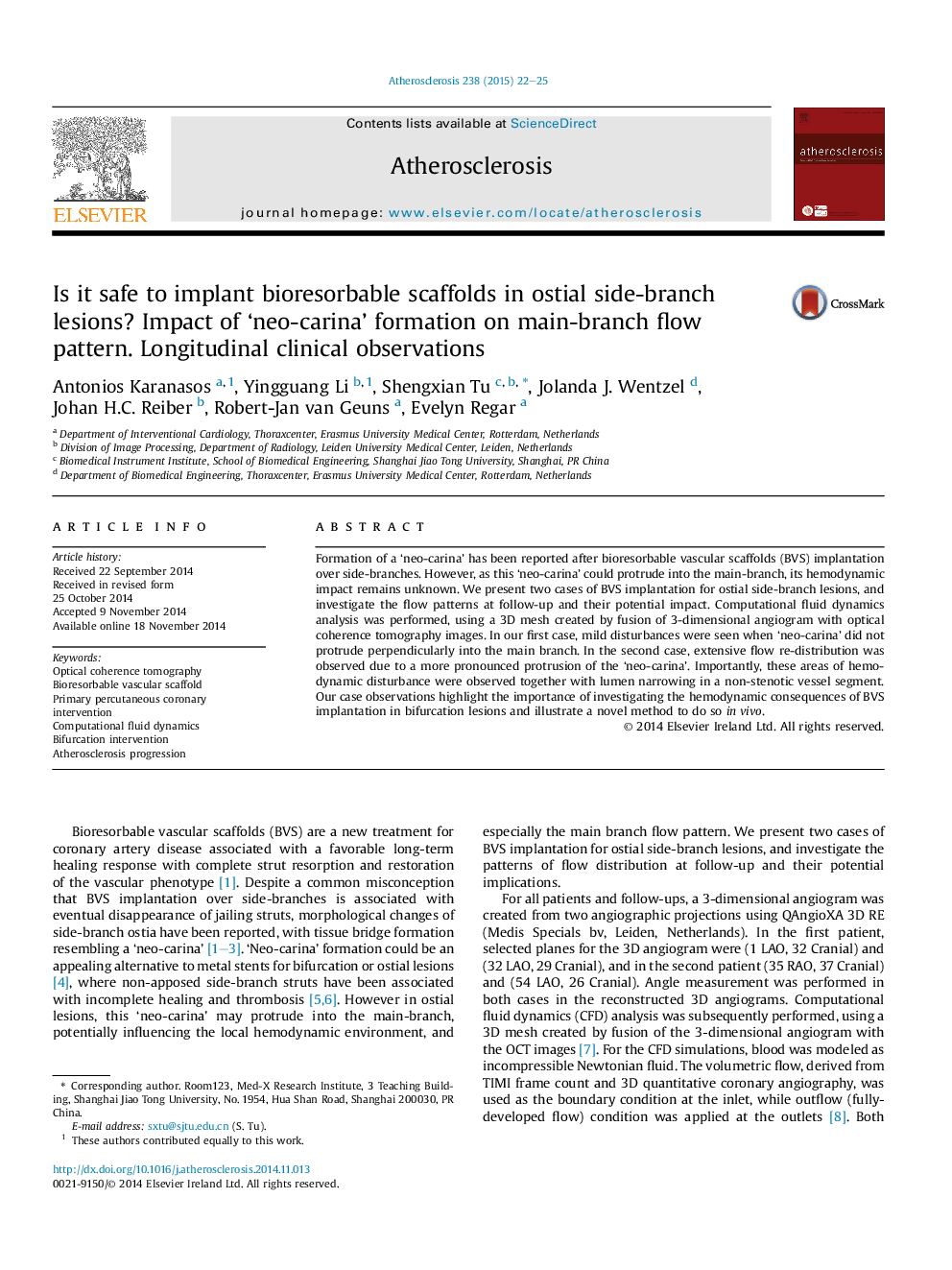| Article ID | Journal | Published Year | Pages | File Type |
|---|---|---|---|---|
| 5945720 | Atherosclerosis | 2015 | 4 Pages |
â¢Bioresorbable scaffold implantation in ostial lesions leads to 'neo-carina' formation.â¢'Neo-carinas' can cause hemodynamic disturbances of variable extent in the main branch.â¢These hemodynamic disturbances can be associated with atherosclerosis progression.
Formation of a 'neo-carina' has been reported after bioresorbable vascular scaffolds (BVS) implantation over side-branches. However, as this 'neo-carina' could protrude into the main-branch, its hemodynamic impact remains unknown. We present two cases of BVS implantation for ostial side-branch lesions, and investigate the flow patterns at follow-up and their potential impact. Computational fluid dynamics analysis was performed, using a 3D mesh created by fusion of 3-dimensional angiogram with optical coherence tomography images. In our first case, mild disturbances were seen when 'neo-carina' did not protrude perpendicularly into the main branch. In the second case, extensive flow re-distribution was observed due to a more pronounced protrusion of the 'neo-carina'. Importantly, these areas of hemodynamic disturbance were observed together with lumen narrowing in a non-stenotic vessel segment. Our case observations highlight the importance of investigating the hemodynamic consequences of BVS implantation in bifurcation lesions and illustrate a novel method to do so in vivo.
